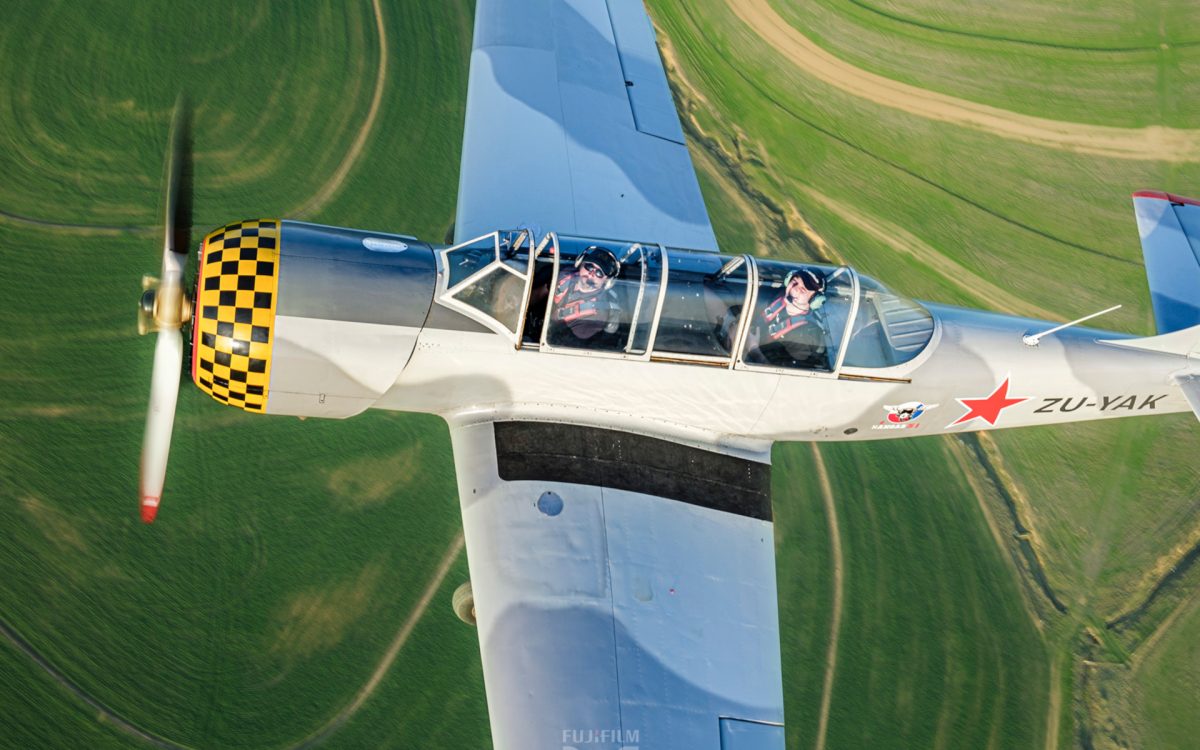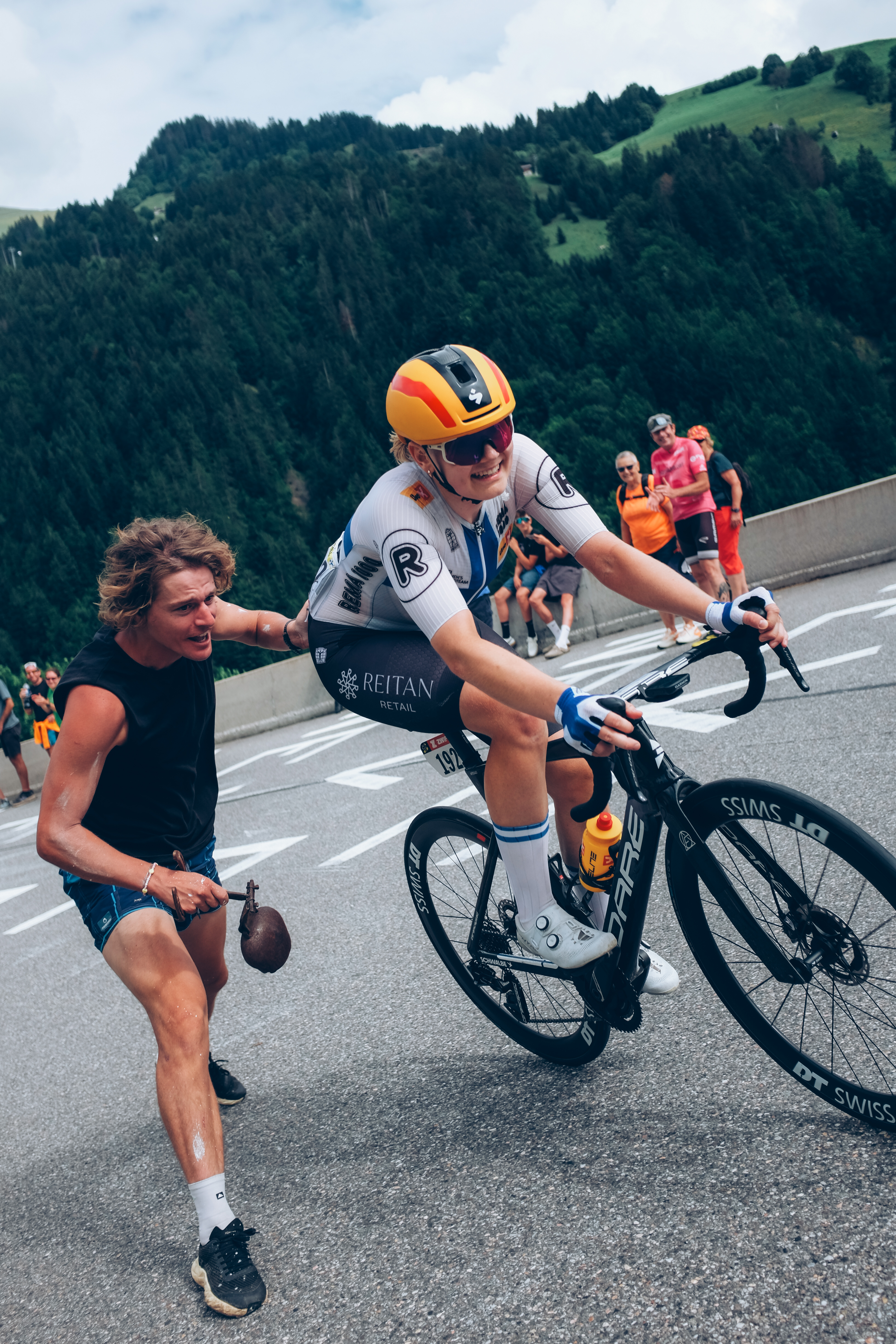USER EXPERIENCE: Fujifilm X-H2S with the AIR Tech Group
Aviation photography experts, The AIR Tech Group, recently had the opportunity to shoot with the new Fujifilm X-H2S camera. We asked them some pertinent questions afterwards. (Images by Frank Moody)
The X-H2S is capable of shooting 40fps blackout-free in burst mode. Did you manage to put burst mode to the test?
When shooting moving aircraft, the camera is permanently in burst mode. It’s important to us that the camera performs reliably in this mode. We used the mechanical shutter, limiting us to 15 frames per second. We needed to use mechanical shutter to eliminate warping on the propellor driven aircraft. (We will be testing the 40fps electronic shutter at an upcoming airshow on some fast-moving jets.)
One of the most important improvements found in the X-H2S is the blackout-free feed on the electronic viewfinder (EVF). Since we are shooting fast moving subjects at low shutter speeds (as low as 1/20th of a second), it is important to be able to effectively track your subject in the viewfinder, ensuring that you’re panning perfectly matches the aircraft. Blackouts have been one of the primary drawbacks to mirrorless camera systems. No more. In burst mode, the EVF maintained a silky-smooth feed.
During the air-to-air shoot with the Yak 52, we found we were able to reduce the shutter speeds significantly compared to previous shoots. This was thanks to a well performing OIS system.
Our hit rates at these slow shutter speeds improved from 3 in 10 to about 7 in 10 photos being usable at shutter speeds of 1/60th and below. This OIS allowed us to confidently push the limits at low shutter speeds, proving for some nice full propeller disk shots in the air. When it comes to photographing aircraft, it is important to capture the motion of the propeller.
The Yak 52 was a suitable subject to test these limits, with a big, two blade propeller moving very slowly. We found that to capture a full prop disk, we had to keep the shutter speed to 1/50 and below.
What can you tell us about the X-H2S’s autofocus and autofocus tracking? Did you use subject detection at all?
We tested the X-H2S subject detection using face/eye detection, airplane, and motorbike modes. All of which proved to be very reliable in different lighting. We tested the airplane setting on close, fast moving, low flying aircraft, where they were flying with trees in the background.
The setting that most impressed us was the motorbike mode. The focus square was fixed to the visor on the rider’s helmet reliably, ignoring obstacles, and never losing the track. We tested this using the X-H2S with the 200mm F2 lens. On this setup we took 418 photos. All of them were sharp and in focus, except for two, which was because the bike was airborne behind a sign (no fault of the camera).
The aircraft detection was used in a very low light setting (about 30 minutes after sunset), and during sunrise. In both instances, the subject tracking worked reliably, focussing on the cockpit glass of the aircraft. At air shows, this will certainly come in handy and will no doubt yield more focused photographs.
We were impressed that the aircraft detection worked on various aircraft, from large passenger planes, like a Boeing 777, to smaller aircraft like a Vans RV4.
What surprised you most about the X-H2S?
Matt Brooks: The X-H2S was an exceptionally reliable tool for us during a recent weekend shoot. We took somewhere in the region of 7000 photos, and the camera never skipped a beat. I was impressed by the reliability of the subject tracking at the motocross track, with 416 out of 418 photos coming out sharp and in focus. The CFexpress card and X-H2S combination meant that we never had to wait for the camera to buffer.
Cuan Ha: The two things that stuck out the most about the camera was the focus speed, and even more so, the stabilisation. We were able to shoot a few sharp images on a plane in an air-to-air flight, even when using shutter speeds as low as 1/20th of a second. This was done while both our camera plane, and the subject plane were bobbing up and down through the turbulent air, and with the doors off the aircraft causing wind to shake the camera.
Frank Moody: Image stabilization is beyond anything I’ve used before. The quality offered at the price point of the X-H2S sits at will be exceptionally hard to top.
What are your thoughts on image quality?
The image quality is good, excellent compared to other crop sensor cameras. Out of the camera, we found that the images were sharper than some of the competitors (although editing levels the playing field here).
The colours are rich, both the pre-processed jpegs, and when bringing out the colours in the RAW files, offering a wide range of creating choices when editing.
As always, having the option to shoot in jpeg with the various film simulations is useful for several reasons. It was nice to see the faces of the pilots light up when they saw their pictures on the camera (some of these pilots were also experienced photographers).
For more info on The AIR Tech Group, join them online:
Website: https://theair.tech/
Instagram: https://www.instagram.com/theair.tech/

















